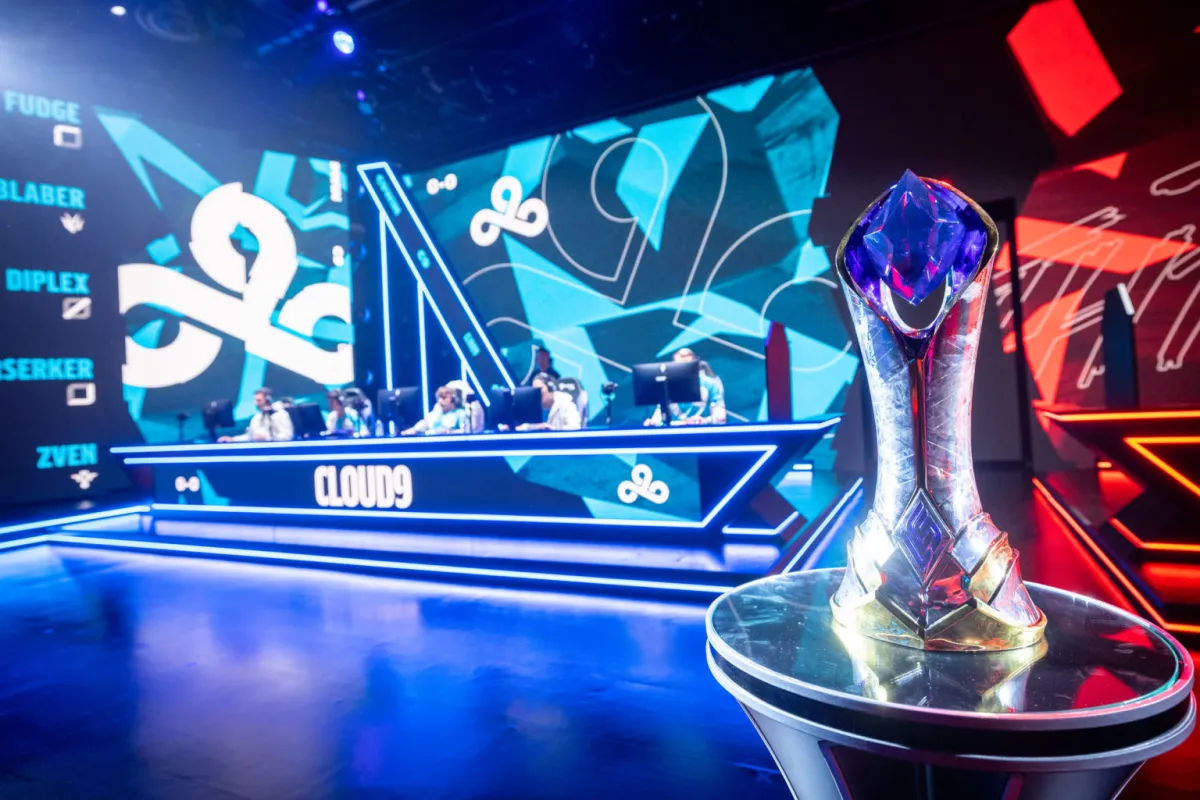Some decks remain in the collective consciousness of Magic: The Gathering players as boogeymen, living on in reputation years later. Players who experienced them have horror stories of certain archetypes running the tables at local tournaments. Meanwhile, top eight lists from GPs and Pro Tours ran rampant with 4-ofs of the same problematic cards.
The more famous ones that come to mind are the Eldrazi Winter, where every format was overrun with the colorless Lovecraftian decks. Also notable was the stranglehold of Cawblade on the competitive meta during Zendikar/Mirrodin Standard.
However, there’s one famously dominant deck from which we can learn important lessons when creating lists for new deck archetypes. With the release of Theros Beyond Death, let’s talk about Monoblack Devotion.
Monoblack Devotion: How to break a format
Monoblack Devotion was the big dog of Standard in the months following Theros’ release in September 2013. It was able to tackle a threatening metagame with a consistent, high-power package of removal, hand attack, and aggressively costed creatures.
At the time, there were three big decks in the metagame: Esper or U/W Control, Monoblue Devotion, and its hybrid aggro/control, Thoughtseize-wielding Monoblack sister archetype. Matt Sperling’s list from GP Vancouver in 2014 is a great example of the fundamental strengths of this archetype.
Even early on into the format, it was so powerful that professionals like Brian Kibler took to Twitter to jest about the power level of the deck.
"Man, monoblack devotion just won the GP. What should I play against it at my next FNM?" "It doesn't matter. They'll just Thoughtseize it"
— Brian Kibler (@bmkibler) October 20, 2013
Consult the Necrosages: Lessons in deckbuilding
The 2013/2014 shells of Monoblack Devotion have an almost brutalist appeal to their streamlined composition. The only cards vying for the one-drop slot are the best hand attack available, with a full playset of [c]Thoughtseize[/c] in the mainboard, and three copies of [c]Duress[/c] awaiting any control-slanted matchup.
Two-cost cards hold one of the deck’s limited — but self-sufficient — creature powerhouses, and its most iconic: [c]Pack Rat[/c]. This is alongside two situational removal spells with an edict from [c]Devour Flesh[/c] and an anti-aggro choice with double [c]Pharika’s Cure[/c] in the main, one available through the sideboard.
The deck would frequently disrupt the opposing game plan in the opening turns through hand attack and removal. Otherwise, it would present a clock with aggressively costed creatures as it transitions into mid-game; oftentimes, it did both.
The three-mana slot of this deck is where we see why this deck dominated. The only creature that appears here is [c]Nightveil Specter[/c], a disruptive flying threat with high devotion synergy. Nightveil holds the ability to turn its evasive body into an advantage by using your opponents’ cards against them.
Next in line is the famous removal spell [c]Hero’s Downfall[/c]. The best removal spell available, bar none, to answer the threats that the situational removal suite couldn’t answer, planeswalkers included.
The only other spell of the same cost is a card that, at the time, wasn’t considered a Constructed player. [c]Underworld Connections[/c] is the deck’s key card advantage engine, drawing cards at the cost of life. Thanks to incidental life gain, the deck was easily able to replenish itself.
Greatness, at any cost
Eventually, as the format evolved, some players would shift towards other three-cost options. Owen Turtenwald, widely considered the deck’s best pilot at the time, would eventually move [c]Lifebane Zombie[/c] to the mainboard to replace Nightveil Specter. Meanwhile, Sperling only houses three of the efficient hand-attack creature as match-up dependent responses.
Pilots who opted to keep Nightveil Specter would sleeve up copies of [c]Temple of Deceit[/c] and other scry-lands that tap for black. This was to enable more possible plays off of Specter’s triggered ability. In turn, this evolution allowed the Monoblack deck to splash additional colors with little commitment. As a result, they would occasionally opt to play multi-colored permanents with black in their casting cost.
In order to follow up on the deck’s early plays, Monoblack needs serious haymakers. This is because it consists of removal, which is inherently reactive, and fragile creatures that provide a source of card advantage. As such, the deck must have powerful, resilient threats that removal and hand-attack can clear a path in order to seal out the game.
Luckily, black is in no short supply of such creatures. [c]Desecration Demon[/c] was a simple yet elegant addition to the Monoblack strategy. As a 6/6 with flying for 4 mana, it was outrageously under-costed for its sheer size. The player staring down this creature was forced to remove it, get hit, or sacrifice their defenders piece by piece.
Who’s Gary?
Finally, and perhaps most importantly, we come to [c]Gray Merchant of Asphodel[/c] — also known as Gary. With mediocre stats, high CMC and an unspectacular ETC, this 5 mana uncommon doesn’t initially seem like a constructed powerhouse.
However, as the format began to come together, one thing became clear: It’s Gary’s world, you’re just living in it.
In the wake of Theros’ release, Monoblack’s best iterations could threaten the possibility of repeated Gray Merchants. This was used against powerful control archetypes that contested with it for the title of ‘Best Deck in Standard’, as well as some incidental survivability via life-gain.
Even if you could compete with Monoblack Devotion’s early disruption and powerful threats, the danger of Gary would still linger. Dropping this 2/4 onto the battlefield would drain your opponent and result in massive total life swings. As such, even a stabilized opponent could be taken down by leveraging Gary’s powerful payoff for the mono-color commitment.
So, what combination of 60 cards best emulates the core strengths of this Standard juggernaut of formats past? Separating its original strategy into three clear steps, we can begin to scope out what this titan looks like today.
1. Open the game with low-commitment/high impact creatures, supplemented by hand attack and a light removal suite. This is to deal with aggressive archetypes and build a board presence against slower ones.
First, the combo of [c]Witch’s Oven[/c] and [c]Cauldron Familiar[/c] is an obvious inclusion after its initial success in Jund Aristocrats. This gives us repeated creatures entering the battlefield for Ayara, synergistic life drain, a non-creature sacrifice outlet for quick kills, and chump blockers if need be, all of which advance our game plan.
Cauldron Familiar offers a chump blocker and inevitability in the late game, along with a single black devotion and easy graveyard recursion. This lets you rebuild your board, even if somewhat slowly in the event an opponent wraths. Optionally, as some pilots opt to do, [c]Knight of the Ebon Legion[/c] does a decent impression of Pack Rat. This is because it lands early and turns open mana into a significant damage threat that will worry your opponent.
For two drops, both [c]Tymaret, Chosen by Death[/c] and [c]Yarok’s Fenlurker[/c] provide two black devotion. They also offer cheap, repeatable disruption to your opponent’s hand and graveyard. The Fenlurker is a particularly effective combo with [c]Nightmare Shepherd[/c], one of the lynchpins of this archetype in new standard.
2. Enter the mid-game with unconditional removal, card advantage & flexible threats that keep your opponent on the back foot.
In order to continue leveraging our early board presence, we’ve slotted [c]Drag to the Underworld[/c] and [c]Murderous Rider[/c] as cheap and versatile removal options. [c]Ayara, First of Locthwain[/c] provides a dark twist on the ‘Soul Sisters’ archetype and comes with three black mana symbols for devotion. On top of that, Ayara has a card advantage engine tacked onto a sacrifice effect, which we’re glad to accommodate.
Murderous Rider offers instant speed removal pinned to a passable lifelinker with two black pips in the top right. Combined with its productivity in Standard, this means there’s little reason for this deck not to be running it. In grindy matchups like midrange ‘monster’ decks, we have a swath of situational removal ready to be boarded in. This is to tackle opponents who want to end the game through turning creatures sideways and counting down from 20.
There are also a few sideboard goodies for control-oriented matchups with hand attack like Duress and a resilient card draw engine/threat in [c]Erebos, Bleak-Hearted[/c]. During this phase of the game, the deck can spend excess mana on high value activated abilities from [c]Knight of the Ebon Legion[/c] and [c]Tymaret, Chosen from Death[/c]. This will slow the game down in time to land a few crucial finishing blows.
Some lists opt to use [c]Treacherous Blessing[/c] as efficient card-draw, offsetting it with the deck’s innate life gain and sometimes destroying it via Blast Zone. While we’ve opted for sheer consistency, this inclusion remains a viable option that many tournament-goers are employing.
3. Shut the door on the game by using high impact threats & Gray Merchant of Asphodel, repeatedly if need be, to turn the battlefield advantage you’ve fought for into absolute board control.
With the lack of a [c]Desecration Demon[/c] equivalent ([c]Spawn of Mayhem[/c] and [c]Clackbridge Troll[/c] sadly do not match up) and more-value, less-aggro cheap creatures, this iteration of Black Devotion is forced to lean into quickly ending the game through sheer card advantage.
The key finishing mechanic in this deck, as hall-of-famer Patrick Chapin notes, is the [c]Nightmare Shepherd[/c] and [c]Gray Merchant of Asphodel[/c] combination. By sacrificing the Gray Merchant to the Shepherd, using either Ayara or Witch’s Oven, every Gray Merchant can trigger twice in the same turn. This can often reverse the dynamic of the game, if not end it entirely, due to how much damage multiple Merchant triggers tend to inflict.
This game plan is given another layer of inevitability through the use of [c]Bolas’s Citadel[/c]. When combined with the deck’s ability to gain life (22/36 of the non-land cards gain life), it can easily churn through excess cards in the late game. This is done by chaining removal spells and additional creatures into Gray Merchants, which often entirely refund life spent casting spells through the Citadel.
Two copies of [c]Witch’s Cottage[/c], while functional on their own, become another way to quickly chain multiple copies of Gary in a single turn. This is via [c]Bolas’s Citadel[/c] in combination with a sacrifice outlet. Castle Locthwain joins as a full playset, able to help draw the deck out of lulls where it begins to lose cards-in-hand to matchups that compete for card advantage in the mid-to-late game.
The finished product
With these lessons established, Daily Esports has assembled a list of 60 cards with an optional sideboard that we believe to be the most generally powerful and effective iteration of this archetype in the new standard format. This deck is streamlined and offers flexibility, consistency, and raw power for you to wield going into a still-evolving metagame.
Best of luck in your Standard journey, Planeswalkers!







Published: Feb 12, 2020 01:14 pm